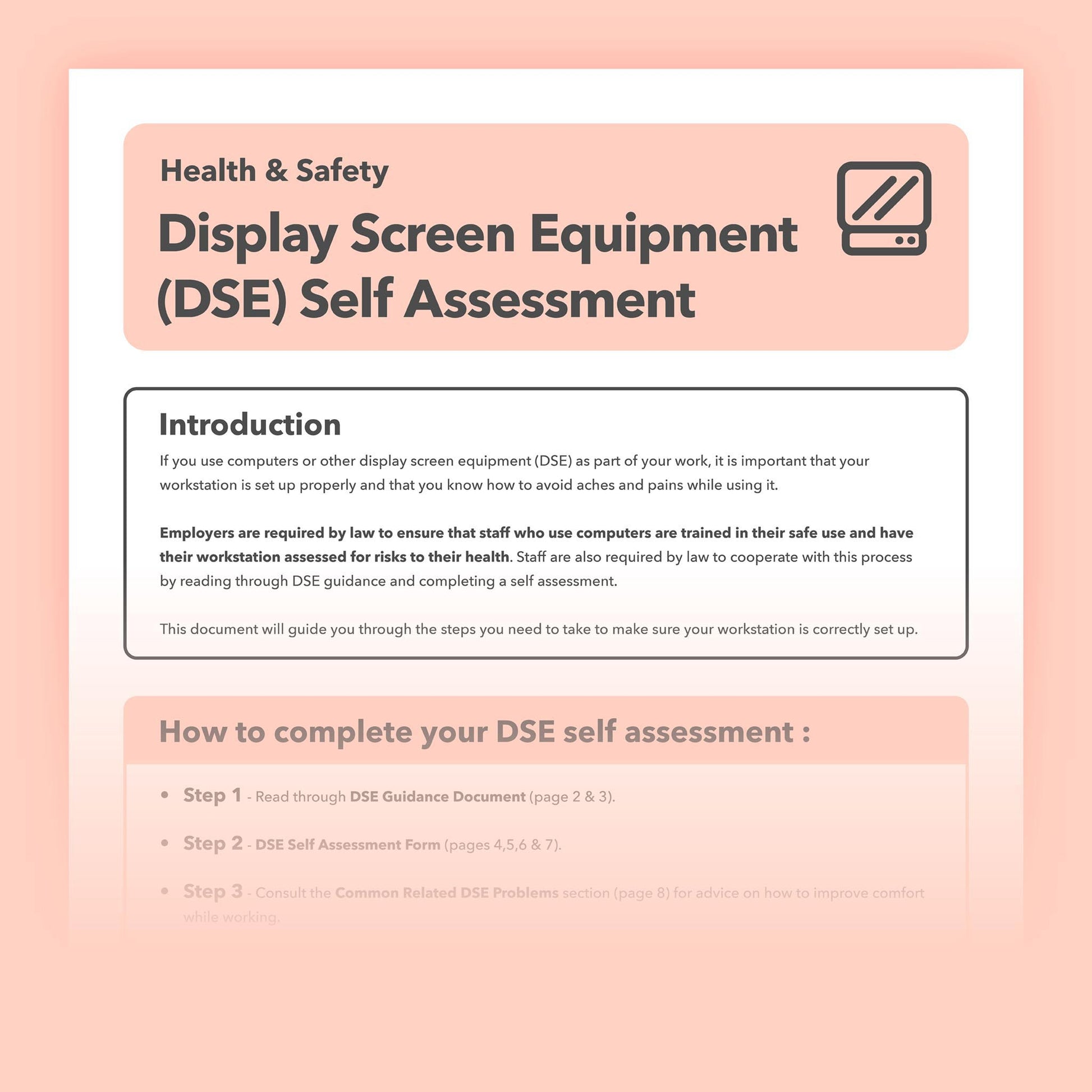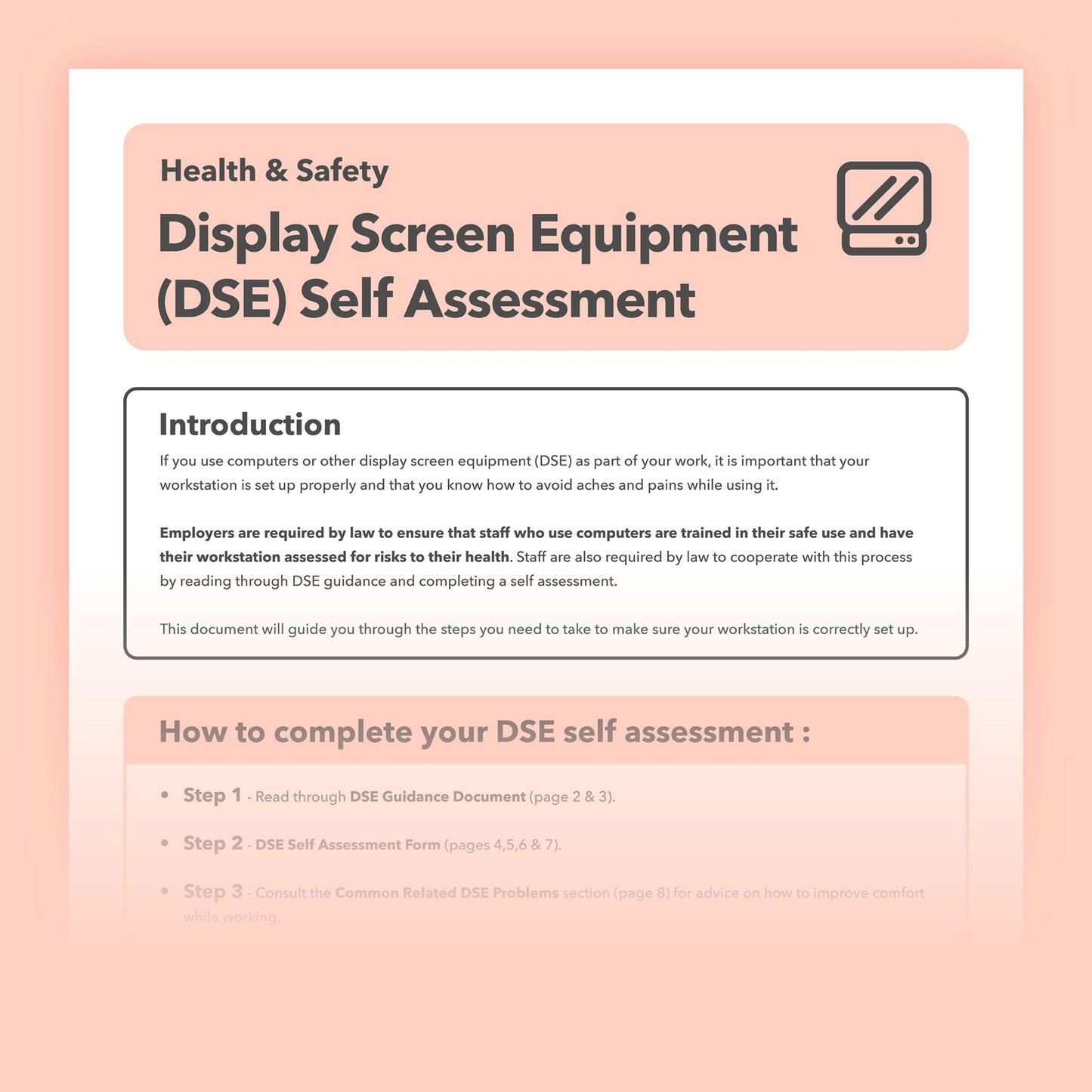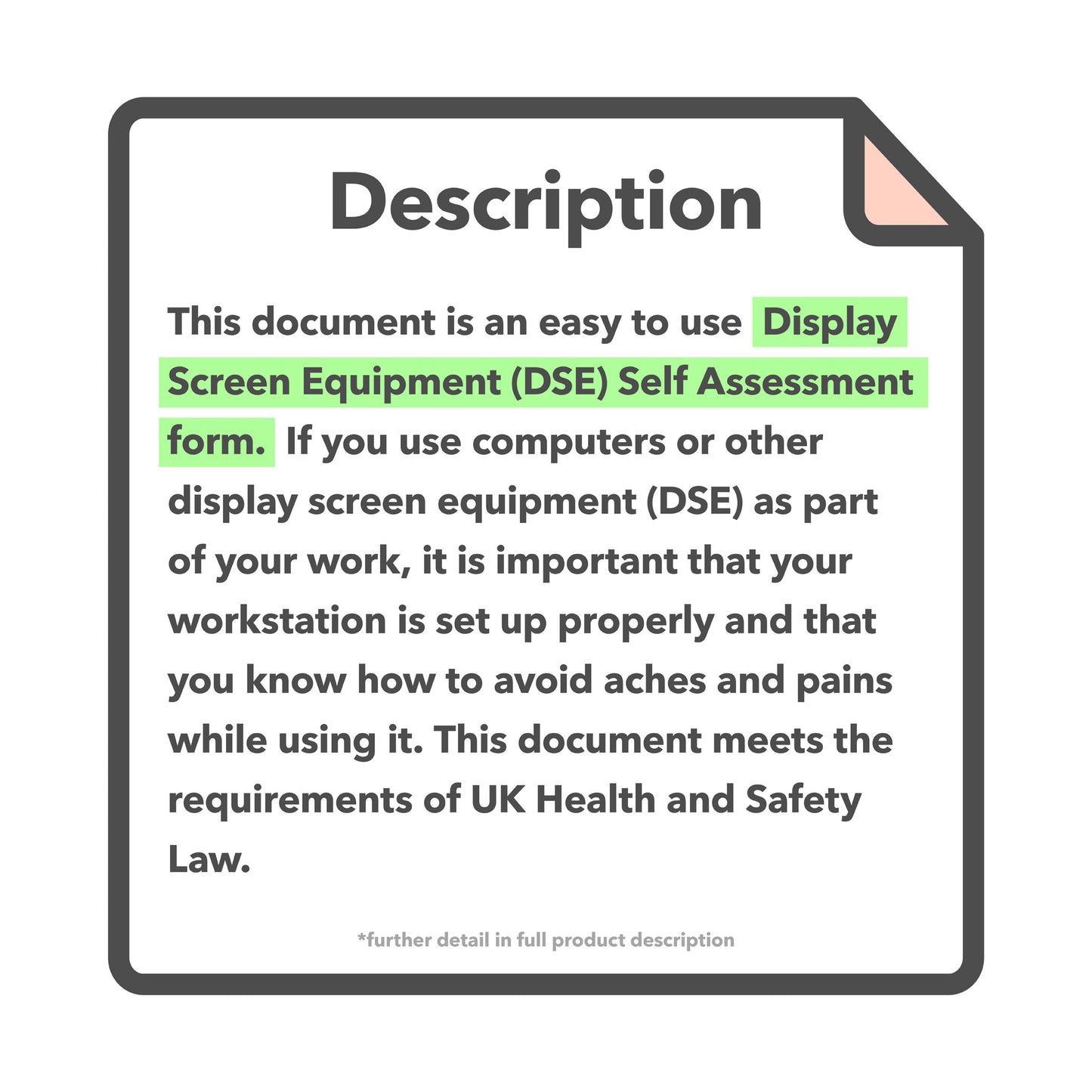
The Essential Role of DSE Assessments in the Modern, Hybrid Workplace

In the modern era, where hybrid working models are becoming the norm, Display Screen Equipment (DSE) assessments have never been more crucial. These evaluations ensure that both traditional office spaces and home offices meet ergonomic standards, thus supporting the well-being and productivity of employees across various environments.
Understanding DSE Assessments
DSE assessments are vital for identifying risks associated with the use of computers, laptops, tablets, and other screen-based devices. They aim to mitigate potential health hazards by recommending ergonomic improvements to:
- Minimise the risk of musculoskeletal disorders.
- Prevent eye strain and fatigue.
- Enhance productivity through optimised ergonomic setups.
The Shift to Hybrid Working
Hybrid work models introduce the challenge of maintaining ergonomic health across multiple workstations. DSE assessments adapt to this change by ensuring each workspace, be it at home or in the office, adheres to health and safety standards, fostering a supportive environment for employee well-being and efficiency.
DSE assessments go beyond just your desk setup; they also dive into software usability, optimising settings to reduce eye strain and boost efficiency. It's a holistic approach that blends the physical with the digital for a truly ergonomic workspace.
The Benefits of Regular DSE Assessments

Regular DSE assessments are integral to the health and efficiency of any organisation, offering numerous benefits:
-
Enhanced Employee Well-being: A well-designed ergonomic setup significantly reduces the risk of musculoskeletal pain and discomfort, thereby improving the overall health and well-being of employees. Regular DSE assessments ensure that workstations are configured to support the natural posture of the body, reducing the likelihood of strain and injury over time.
-
Increased Productivity: By creating an environment that minimises fatigue, discomfort, and the risk of injury, employees can focus better and maintain productivity. Ergonomic workstations designed following DSE assessments can lead to a noticeable increase in work output and quality, as employees are less distracted by discomfort and more engaged with their tasks.
-
Compliance with Health and Safety Legislation: Regular DSE assessments help organisations stay abreast of their legal responsibilities, ensuring work environments comply with national health and safety standards. This compliance not only protects the organisation from potential legal challenges but also demonstrates a commitment to employee health and safety, potentially enhancing the company's reputation among current and prospective employees.
Adapting to Hybrid Work Environments
In hybrid work environments, the approach to DSE assessments must be dynamic, catering to the varying needs of different workspaces. This requires flexible assessment strategies, comprehensive employee education on ergonomic principles, and the agility to update processes as work habits and technologies evolve.
Implementing Effective DSE Assessments

Creating an effective DSE assessment process for a hybrid workforce involves several critical steps:
-
Identify Needs: Start by understanding the diverse needs of various workstations and the specific tasks performed at each. This includes considering the physical layout of each workspace, the type of DSE used, and any unique requirements based on individual employee needs or the nature of their work.
-
Educate Employees: Empower employees with the knowledge and tools to conduct preliminary self-assessments, especially crucial for those in remote settings. Provide training on how to adjust their workstations, recognise signs of ergonomic strain, and when to seek further assistance.
-
Regular Review and Feedback: Establish a routine for conducting DSE assessments that includes regular check-ins and updates. Encourage feedback from employees about their workstations and any ergonomic concerns they might have. This ongoing dialogue ensures that the DSE assessment process remains relevant and effective, adapting to changes in the workplace or employee needs.
Best Practices for Hybrid Workstations
To fully support hybrid workstations, it's essential to offer resources for ergonomic furniture and equipment for both home and office settings, encourage habits that reduce the risk of strain, such as taking regular breaks, and promote the use of ergonomic accessories that improve posture and comfort during prolonged DSE use.
Conclusion

The role of DSE assessments in ensuring a healthy and productive hybrid workplace is indispensable. By regularly evaluating workstations and adapting ergonomic practices to the needs of a diverse workforce, organisations can safeguard their employees' well-being, enhance productivity, and fulfil their health and safety obligations.










